
Tasomachi: Behind the Twilight (Review) - Hopping Across Rooftops
What if Nintendo’s Mario were a cute girl tasked with bounding across a series of scenic villages nestled within a cryptic land deep within the Orient? A realm steeped in vague, Eastern belief and sensibility? One where the people were protected, even ruled, by a kind of pantheistic, ethereal energy? That’s Tasomachi, essentially.
As Yukumo, a spritely but enigmatic lass, players must trek and bound through ghostly towns and awaken the “Sacred Trees” slumbering within. Doing so dispels the eerie fog otherwise clogging the villages' sleepy by-ways. These trees can't be reached, however, without first completing a series of platforming challenges, none of which are particularly difficult. Indeed, a “death” is merely a fall and a nearby respawn to try again. There are no true foes or opposition.
In fact, “sparse and spartan” seems to be the secondary theme behind the game’s serene proceedings. Though the towns are cozy places that evoke an almost Miyazaki sensibility, they’re also hauntingly empty. Imagine patrolling an idyllic, almost purgatorial paradise of glorious sights but little to no sound. Where everyone was gone, leaving the visitor with nothing to do but wander and bound around. A pristine playground, essentially, but with no one to play with. No hustle, no bustle.
Except some cats, that is. These cute, anthropomorphic munchkins—themselves a fairly scarce sight—offer scant clues to the next Sacred Tree location or some nebulous detail regarding the realm itself. Unlocking the trees' locations, however, means first procuring a set number of golden lanterns strewn throughout each environment. This is where the Mario-esque clambering and vaulting comes in; these lanterns must be grabbed from obscure sights and precarious heights sprinkled all over the map. It’s not unlike hunting moons in Super Mario Odyssey, except the feats are much more pedestrian and straightforward in nature. For most, it’s simply spotting one somewhere, then moving/jumping/dropping toward it.
Tasomachi is light on depth, heavy on the pretty scenery. It’s more akin to an open-ended, virtual tour in which visitors are allowed to run free in what feels like a living, interactive painting. But there’s little more beyond the sightseeing, even despite the extra abilities that are eventually unlocked (power stomp, air dash, and double jump). Piloting the heroine’s airship is also fun for a time, but amounts to just another incidental means of exploring. It’s as if the designers crafted the playground without understanding the concept of “play,” thus forgetting the gameplay along the way.
Compared to Mario, Tasomachi isn’t exactly fun—at least, not in the conventional sense. But it is relaxing. A perfect escape, even, from the more taxing demands made of other games. It’s a vacation to an impossible place, laid in a maiden of lace and grace…
If that seems like an exquisite dream, Tasomachi provides the perfect vessel.--D
Publisher: PLAYISM
Developer: Orbital Express
System: Steam
Release: 2021
Genre: Platformer

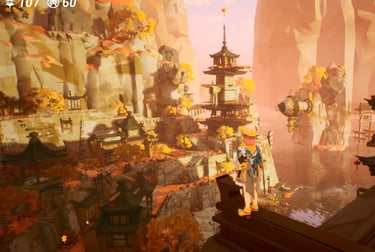
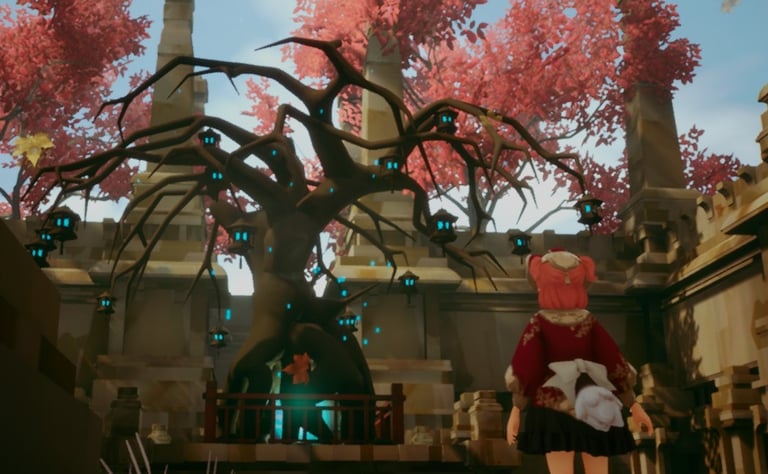





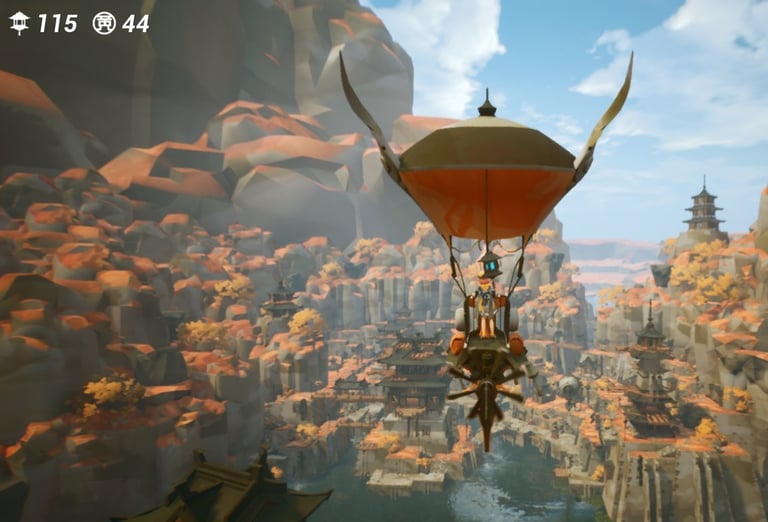

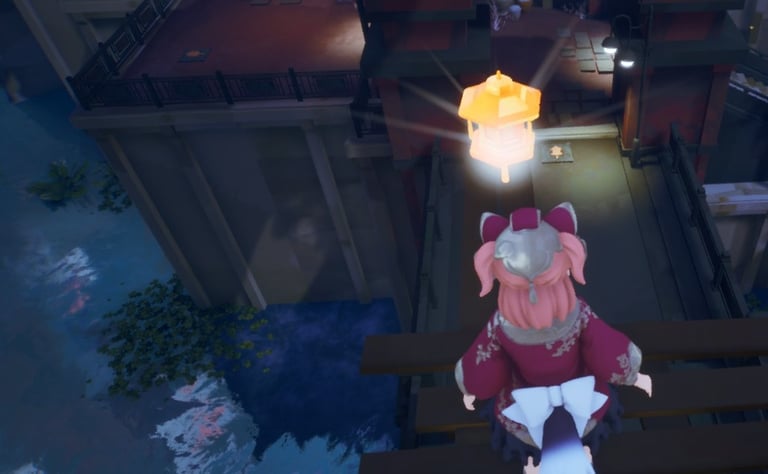

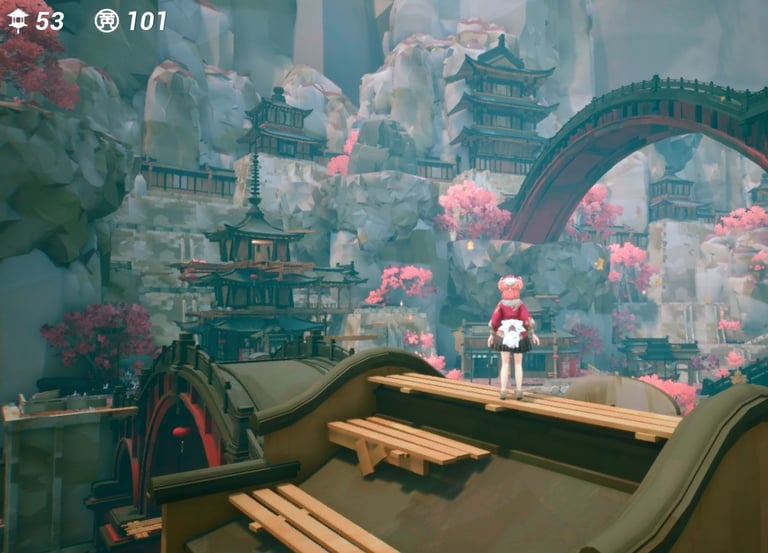

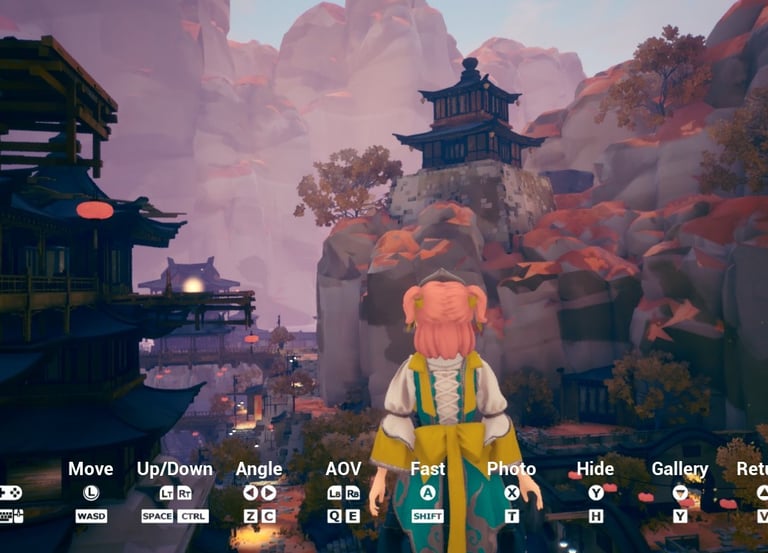



The towns are full of idyllic spots for sightseeing, some quite literal. The included photo mode offers plenty of additional options for those obsessed with taking the perfect shot.
Not unlike Super Mario 64's Power Stars, Yukumo must search for dozens of golden lanterns which grant her access to the Sacred Trees...once she surmounts the platform traps waiting just before. Apparently, with great jumping comes great responsibility.
Late in the game, Yukumo regains access to her airship, opening a bevy of new sightseeing opportunities.
Photo-bombed! Yukumo's quest is a largely lonely one, but little cat creatures do exist throughout, offering tips, services, and bits of inscrutable lore.


Contact: lostnostalgiaproductions@gmail.com
Website: www.lostnostalgia.com
Like what we're doing? Please consider throwing us a dollar into our Patreon page's tip jar!


